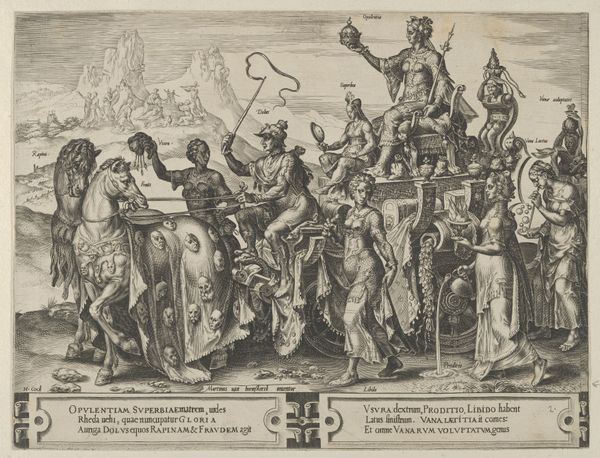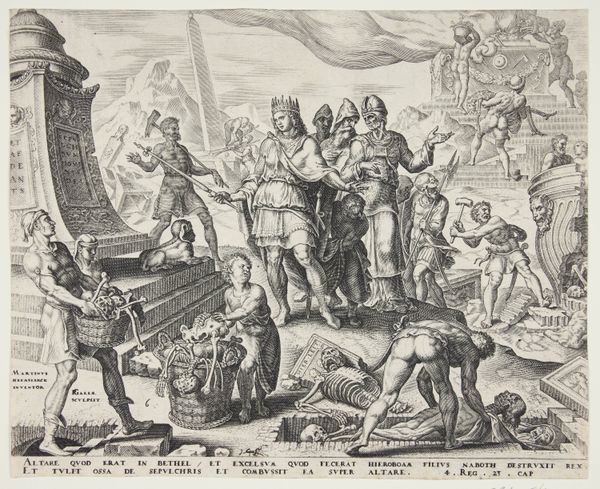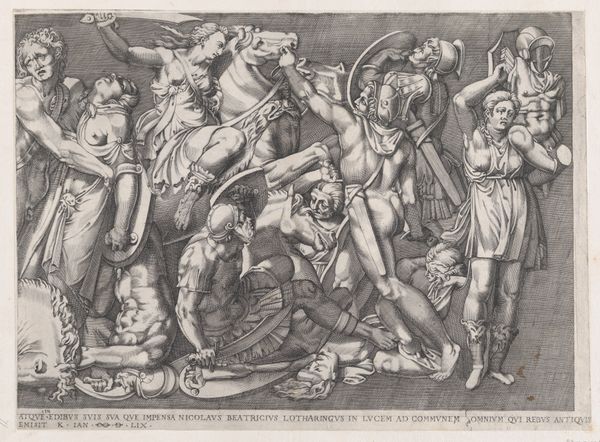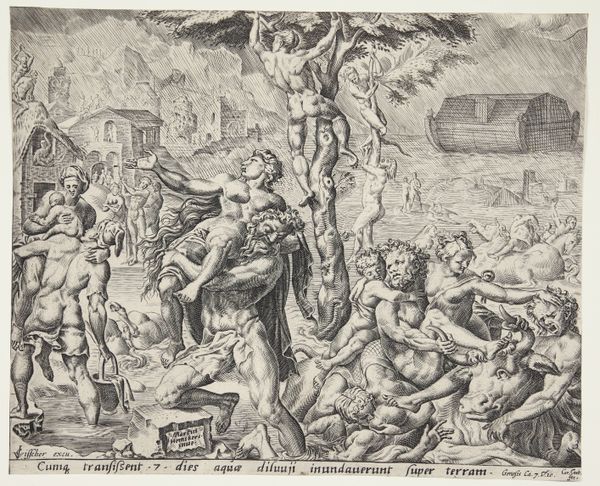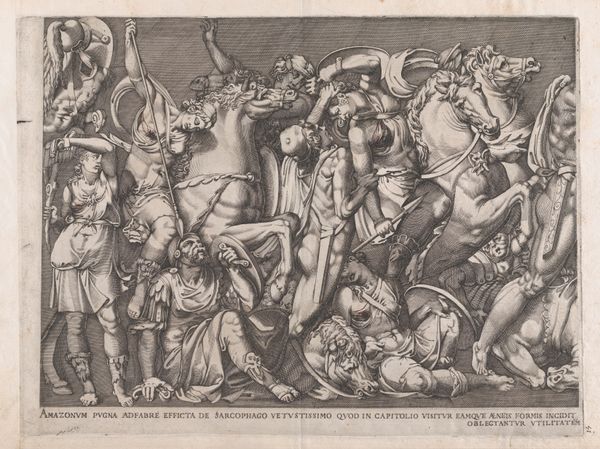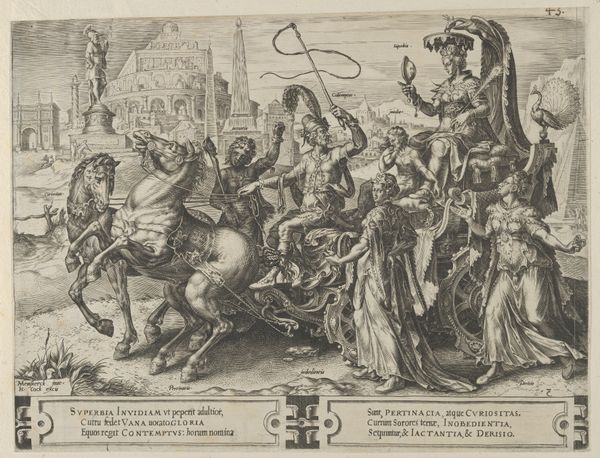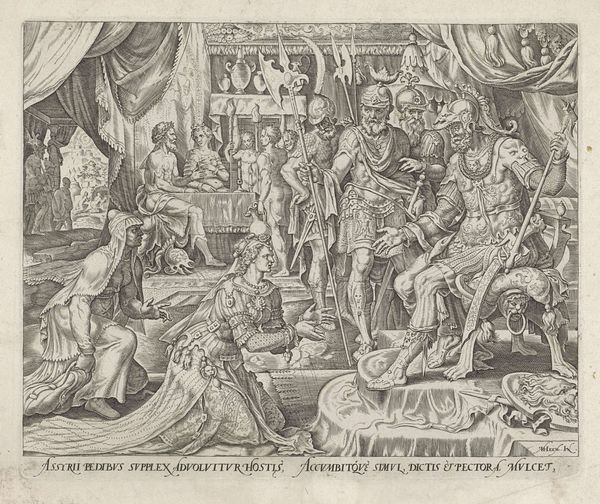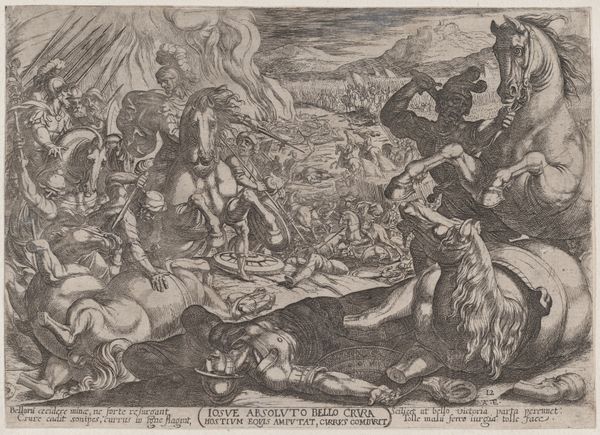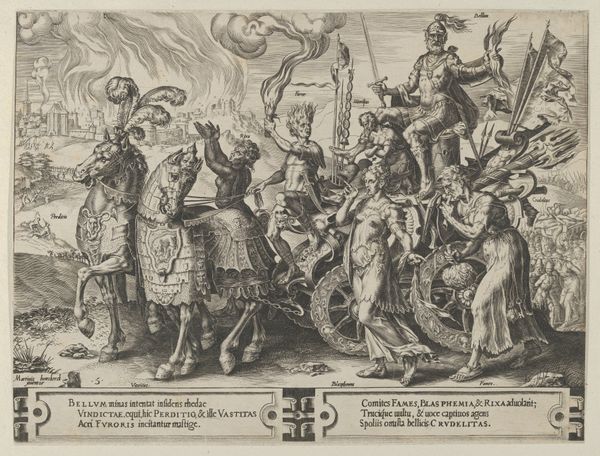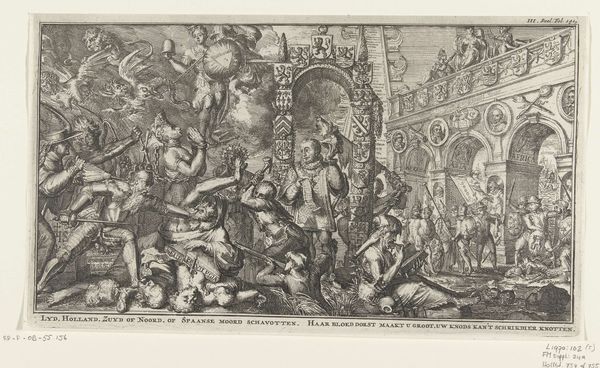
The son's of god, Satan, amongst them, present themselves before the Lord 1563
0:00
0:00
print, engraving
# print
#
mannerism
#
figuration
#
history-painting
#
engraving
Dimensions: 206 mm (height) x 245 mm (width) (bladmaal)
Curator: This print is entitled, "The sons of god, Satan, amongst them, present themselves before the Lord". Created by Philips Galle in 1563, it's a striking example of Mannerist engraving, currently held at the Statens Museum for Kunst. Editor: What a dramatic tableau! The light and shadow play feels almost theatrical, with that towering figure on the right holding the sphere...a potent sense of dominion. But there's unease here too. Curator: Notice how Galle's use of engraving emphasizes line and form. The density of lines builds volume, giving each figure a tactile quality. Look at the variations of hatching that help distinguish each character, a detail so laborious when we consider the likely printing process of the time. It would have been quite difficult and took an artist of high quality. Editor: Absolutely. I am drawn to the contrast between the ethereal cloudscape and the somewhat grotesque figures. It speaks to a conflict of powers, an uneasy relationship between the celestial and the infernal, all those wings, horns, that staff… it reads so clearly! Satan himself is instantly recognizable by his traditional attributes, and is included within the "sons of God." Quite unsettling! Curator: From a material perspective, think about the paper itself— likely a handmade laid paper. Galle would have needed a steady hand to carve the copperplate, reflecting a period where printmaking was both a technical craft and a potent means for disseminating visual culture. It was cheaper than a painting and so much easier to spread around society! Editor: The figures’ placement creates symbolic tension as well. All converge towards that imposing figure with the orb, who must represent God. The gaze and gesture direct our understanding, like the Devil with his back turned, creating a visual and theological hierarchy. This presentation is incredibly controlled and crafted, using iconography that's dense but readable for the intended audience. Curator: Looking at the social conditions of the time and the labor necessary to create these works, Galle participated in an artistic network of the late Renaissance. This puts this print in a whole chain of artistic distribution, where Galle might be designing it, someone is pulling prints, and eventually vendors are spreading this message of theology to an increasingly wide and literate populace. Editor: Exactly! This piece speaks volumes, showing how enduring stories and imagery are made manifest, with these same types and figures continuing to carry weight today! Curator: Indeed, by looking at the materials, methods, and mode of artistic consumption we get a full grasp of what it took for the artist to achieve this timeless picture.
Comments
No comments
Be the first to comment and join the conversation on the ultimate creative platform.
